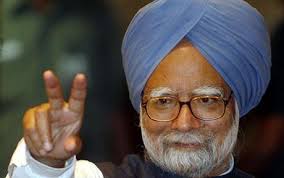Getting Rudy's Back
The next latest issue of C&E News, house organ of the American Chemical Society continues the back and forth about Rudy Baum's forthright statement on climate change on which Eli has been making a reporting from the scene. There has been an intelligent response to the harumphing chorus. We start with something nice
I am writing to thank you for your editorial on climate change. I understand that you're being bombarded by the forces of ignorance, but as a climate scientist, I can assure you that your views of the science are spot on. Keep up the good work, and don't be intimidated by the screaming from those for whom politics matters more than science.something old
Andrew Dessler
Readers who may be confused about the causes of climate change might want to read the Nongovernmental International Panel on Climate Change (NIPCC) summary report, "Nature, Not Human Activity, Rules the Climate" (www.sepp.org/publications/NIPCC_final.pdf). The title tells the story. . .something useful
S. Fred Singer
Many chemists are skeptical about the science of global warming because it doesn't fit well with the frame of their chemistry mind-set. An example is the letter by Thomas E. D'Ambra in which he asks, "How many kilocalories of infrared energy can a ton of carbon dioxide absorb?" (C&EN, July 27, page 6). The question implies that the amount of carbon dioxide in the atmosphere may be insufficient to cause a change in the trapping (the greenhouse effect) of the outgoing energy by Earth's thermoradiation.This time there are 16 letters supporting Baum's editorial and 4 opposed. Many of the supportive letters are quite blunt
I encountered questions from professional chemists similar to this while giving presentations on global warming, and I was initially unable to come up with a satisfying answer. The basis of the question is legitimate: CO2 absorption in the infrared region of the spectrum is weak on a per-molecule basis, and CO2 is a minor component of the atmosphere, with a current concentration of 380 ppm (only 380 molecules out of 1 million molecules in air are CO2).
Any person, particularly a skeptical chemist, would expect that, with the nonstop emission of thermoradiation from Earth's surface, all CO2 molecules would soon be in the excited vibrational and rotational levels of their molecular energy states, and none would be left to absorb more outgoing energy. Hence, the greenhouse effect would be very limited.
However, CO2 molecules do not exist alone in the atmosphere. The excited molecules can and do transfer their excess energy to other molecules and return to ground states and are therefore ready to absorb thermoradiation again. The transfer of the initially absorbed energy to other nonabsorbing molecules, called "quenching" in photochemistry, enables a relatively small amount of greenhouse gases such as CO2 to continuously absorb the thermoradiative energy, which otherwise would escape into space, and to convert the radiation back to thermal energy that stays on Earth.
Therefore, the answer to D'Ambra's question is that an unlimited amount of infrared radiative energy can be absorbed and returned back to Earth by small quantities of atmospheric CO2 and other greenhouse gases. The greenhouse effect is continuous along with Earth's thermoradiation.
Jihong Cole-Dai
After reading your editorials of June 22 (page 3) and July 27 (page 5) and the letters to you about the June 22 editorial, I am amazed. The level of illogical thinking and ignoring of obvious evidence in many of the letters is appalling to me. I expect such stuff in my local newspaper, the Seattle Times, but not from such a highly educated readership as yours.
It makes me ashamed of my profession (chemistry). But then again, it just drives home to me that even educated people who are talking about something that is not in their area of training and/or expertise sometimes act in strange ways. I'm not sure why, but I suspect it has to do with their religious outlook, their political leanings, or their paranoid ideas regarding conspiracies.
Your editorials were right on the mark. They contain some of the most concise and pointed discussions of climate change I have seen. . . .
Harvey F. Carrolland how can Eli do anything but close with
Ouch! I think you got a taste of what it has been like teaching environmental chemistry in Utah.
Stephen E Bialkowski










